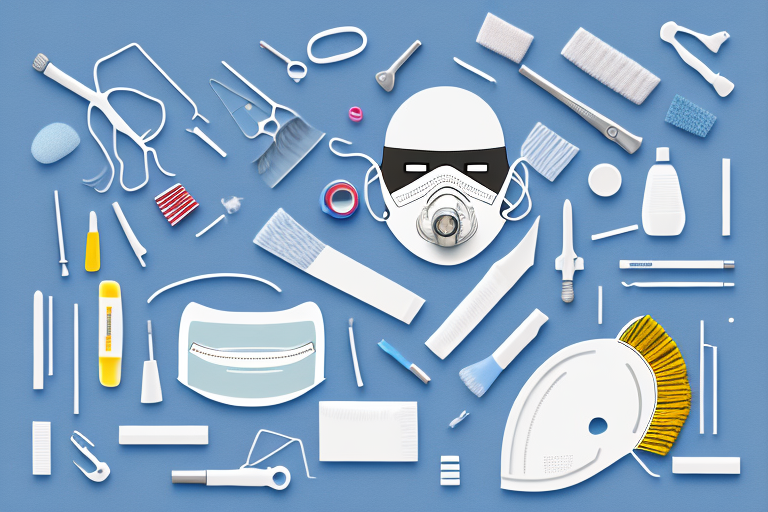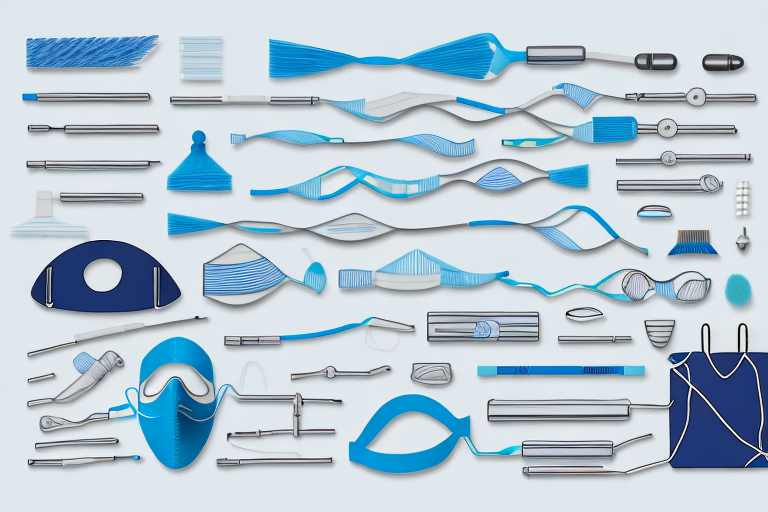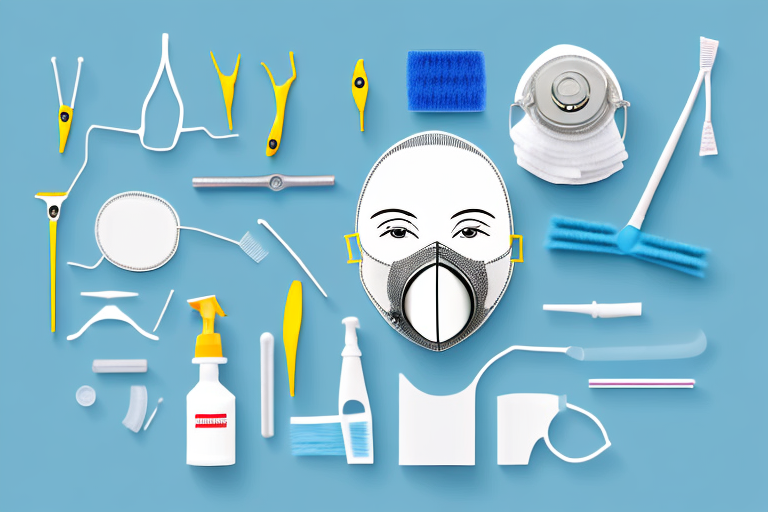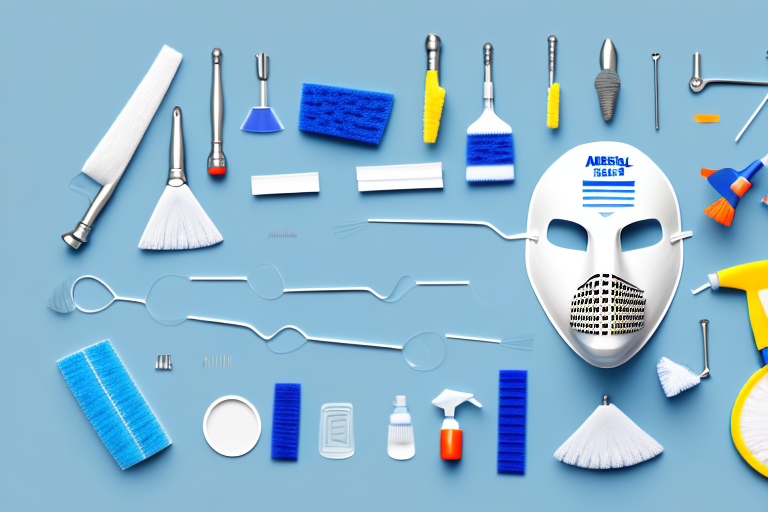If you use a ResMed mask for your CPAP therapy, you want to ensure that it performs at its best. To achieve that, you need to know how to clean and maintain your mask. In this article, we’ll provide you with tips on how to maximize your mask performance.
Understanding Your ResMed Mask
Using a ResMed mask is an essential part of your sleep therapy, and understanding how it works is crucial to ensuring that you get the best possible results. A ResMed mask is designed to deliver pressurized air to your airways, helping you breathe more easily and reducing the symptoms of sleep apnea.
Types of ResMed Masks
ResMed offers a variety of mask types, each designed to meet specific needs and preferences. Full face resmed masks cover both the nose and mouth and are ideal for people who breathe through their mouth at night. Nasal masks only cover the nose and are a good choice for people who prefer a lightweight mask that allows for more freedom of movement. Nasal pillows are the smallest type of mask and are designed to fit directly into the nostrils, making them an excellent choice for people who find other masks uncomfortable or claustrophobic.
When choosing a ResMed mask, it’s important to consider your individual needs and preferences. Do you prefer a mask that covers your entire face or just your nose? Do you need a mask that is lightweight and easy to wear, or do you prefer a more substantial mask that provides more support?
Key Components and Their Functions
A ResMed mask consists of several key components that work together to ensure effective therapy and maximum comfort. The cushion is the part of the mask that touches your face and creates a seal to keep the pressurized air inside the mask. ResMed offers a variety of cushion materials and sizes to ensure a comfortable fit for every user.
The headgear is another essential component of the ResMed mask. It is designed to keep the mask securely in place while you sleep, ensuring that it stays in the correct position and delivers the right amount of air pressure. ResMed headgear is adjustable, so you can customize the fit to your individual needs.

The frame of the ResMed mask provides support for the cushion and headgear and helps to distribute the pressure of the mask evenly across your face. The frame is designed to be lightweight and comfortable, so you can sleep soundly without feeling weighed down or uncomfortable.
Finally, the tubing connects the ResMed mask to your CPAP machine, delivering the pressurized air that helps you breathe more easily. ResMed tubing is designed to be flexible and durable, so it can withstand nightly use and provide reliable therapy for years to come.
By understanding the different types of ResMed masks and their key components, you can choose the mask that best meets your needs and get the most out of your sleep therapy. Whether you prefer a full face mask, a nasal mask, or nasal pillows, ResMed has a mask that will help you breathe more easily and get a better night’s sleep.
Proper Cleaning Techniques for ResMed Masks
Daily Cleaning Routine
Proper cleaning of your ResMed mask is an essential part of ensuring its longevity and effectiveness. By cleaning it every day, you can prevent bacteria buildup and odors, keeping your mask fresh and clean. To start your daily cleaning routine, disassemble the mask components and wash them in warm, soapy water. Avoid using hot water or placing the mask components in the dishwasher, as this may deform or discolor the material.
When washing your mask, it’s important to use a mild detergent that doesn’t contain harsh chemicals that may damage the mask. After washing, rinse the mask components thoroughly with water and let them air dry on a clean surface. This will help prevent any moisture buildup that can lead to mold or mildew growth.
Weekly Deep Cleaning Process
In addition to your daily cleaning routine, it’s important to deep clean your mask once a week. This involves soaking the mask components in a solution of water and vinegar for about 30 minutes. Vinegar acts as a natural disinfectant, killing off any bacteria that may have survived during daily cleaning. After soaking, rinse the mask components thoroughly with water and let them air dry on a clean surface.
Deep cleaning your mask once a week will help ensure that it remains free from bacteria and other harmful substances that can affect its performance. This will also help prevent any unpleasant odors that can develop over time.
Cleaning Products to Use and Avoid
When selecting a cleaning product, it’s important to choose one that is compatible with your ResMed mask. ResMed offers its own line of mask cleaners that are safe and effective for cleaning and maintaining the mask. These cleaners are specifically designed to be gentle on the mask material, while still effectively removing dirt and bacteria.
When cleaning your mask, avoid using abrasive materials like brushes or scrub pads, as these may scratch the mask surface. This can lead to a buildup of bacteria and other harmful substances, which can affect the mask’s performance. Additionally, avoid using alcohol-based cleaners or bleach, as these may harm the mask material.
By following these proper cleaning techniques, you can help ensure that your ResMed mask remains in top condition, providing you with the best possible sleep therapy experience. With regular cleaning and maintenance, you can extend the life of your mask and enjoy a more comfortable and effective sleep therapy experience.

Maintaining Your ResMed Mask
Inspecting for Wear and Tear
Regular inspection of your ResMed mask is crucial to detect any wear and tear that may diminish its performance. Check the mask cushion for cracks or leaks that may compromise the seal. Look for any signs of damage to the headgear, frame, or tubing. If you notice any defects, you may need to replace the affected component for maximum mask performance.
It’s important to note that wear and tear can happen more quickly depending on how often you use the mask and how well you care for it. For example, if you frequently expose the mask to extreme temperatures or harsh chemicals, it may deteriorate faster. To ensure the longevity of your mask, store it in a cool, dry place and clean it regularly according to the manufacturer’s instructions.
Replacing Mask Components
Masks are subject to regular wear and tear, so it’s essential to replace their components periodically. Your ResMed mask user guide will indicate the recommended replacement frequency for each component. Generally, cushions should be replaced every 1-3 months, headgear every 6 months, and tubing and frame every 12 months. By following these guidelines, you can maintain the mask’s performance and ensure its longevity.
It’s important to note that replacing components on time not only ensures the mask’s performance but also helps prevent health issues. For example, if the cushion is not replaced frequently enough, it can harbor bacteria and cause skin irritation or infections. By replacing components on time, you can avoid these issues and ensure the mask is functioning at its best.
Troubleshooting Common Issues
If you encounter any issues with your ResMed mask, don’t panic. Many common issues are easy to troubleshoot and fix. For example, if you experience air leaks from the mask, you may need to adjust the headgear or cushion. If your mask makes noise, try checking the tubing for blockages or twisting. If you cannot resolve the issue, refer to your user guide or contact ResMed customer support for assistance.
It’s important to note that some issues may require more than a simple adjustment or cleaning. For example, if you notice a tear in the cushion, you will need to replace it. If you are unsure how to troubleshoot an issue or if you do not have the necessary replacement parts, it’s best to contact ResMed customer support. They can help you diagnose the issue and provide the necessary parts or repairs.
By following these maintenance tips and troubleshooting common issues, you can ensure your ResMed mask is functioning at its best. This will not only improve your sleep quality but also your overall health and wellbeing.

Optimizing Mask Fit and Comfort
A good night’s sleep is essential to our overall health and wellbeing. If you suffer from sleep apnea, using a CPAP machine can help you breathe easier and get the rest you need. However, finding the right mask fit and comfort can be a challenge. In this article, we’ll discuss some tips and tricks to optimize your ResMed mask fit and comfort, ensuring a restful sleep.
Adjusting Straps and Cushions
When it comes to mask fit and comfort, the headgear and cushion are two essential components. It’s essential to adjust them correctly to achieve optimal performance. The headgear should be snug but not too tight, as this may cause discomfort. If the headgear is too loose, it may cause air leaks, reducing the effectiveness of the therapy. Adjust the cushion to fit your nose or mouth properly, ensuring a seal that keeps the air pressure inside the mask. Try different cushion sizes to find the one that suits your facial structure best. A well-fitted cushion will prevent air leaks and provide a comfortable seal, ensuring that you get the most out of your therapy.
Finding the Right Mask Size
Choosing the right mask size is crucial to achieving maximum mask performance. ResMed masks come in different sizes, so you can find the one that fits you best. It’s essential to measure your facial features accurately before ordering a mask. ResMed provides a sizing guide that helps you find the right mask size based on your facial measurements. A mask that is too big or too small may cause discomfort and air leaks, reducing the effectiveness of your therapy. Therefore, finding the right mask size is crucial to ensure optimal mask performance.
Addressing Common Discomfort Issues
It’s not uncommon to experience discomfort while wearing a ResMed mask. However, there are several ways to address common discomfort issues and enhance your mask performance. For example, a mask liner or nasal pad can alleviate pressure and prevent skin irritation. If you require more humidification, consider using a heated humidifier or a CPAP machine with integrated humidification. A dry nose or throat can cause discomfort and reduce the effectiveness of your therapy. By addressing common discomfort issues, you can enhance your mask performance and ensure a restful sleep.
It’s essential to clean and maintain your ResMed mask regularly. A dirty or worn-out mask can cause discomfort and reduce the effectiveness of your therapy. Follow the manufacturer’s instructions for cleaning and maintenance to ensure optimal mask performance.
In conclusion, optimizing mask fit and comfort is crucial to achieving maximum mask performance and ensuring a restful sleep. By adjusting the headgear and cushion correctly, finding the right mask size, addressing common discomfort issues, and cleaning and maintaining your mask regularly, you can get the most out of your ResMed mask. With increased performance comes increased comfort, so why not give these tips a try and see the difference it makes to your CPAP therapy?

